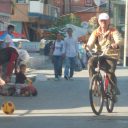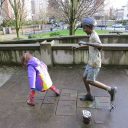


A design competition that’s putting a new spin on parking
Spin and Better Block Foundation are calling on designers, urbanists and anyone who cares about safe and livable streets, to submit ideas for a new generation of multimodal parklets. Winning projects will be rolled out...Read more
Designing for wellbeing in children’s hospitals
New research sets out guidelines for architects and designers to create supportive, positive hospital spaces for children and their families at a difficult time. “I like the window because it’s bright and sunny and it...Read more
Creating relevant playgrounds in a tech-driven world
How vital are playgrounds in today’s society? For many people, unstructured outdoor play is viewed as a luxury, not a necessity. As a result, children don’t devote as much time in unstructured outdoor play as...Read more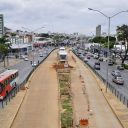
Why Does Universal Street Design Matter?
Accessibility remains a challenge for Belo Horizonte’s bus rapid transit corridor. Improving public transit requires a hard look not just at vehicles and routes but at how people get on and off them. Too often, design...Read more
What big data tells us about our neighbourhoods
Just because we have all the necessary amenities in the places we live doesn’t mean we’re happy. What makes a place a community is far more than bricks and mortar and services. Imagine a place that...Read more
Cafeteria design can get children to eat healthier
While a growing body of research suggests that small changes to a school environment can help reduce childhood obesity and improve nutrition, 80 percent of school-aged children still fall short of national dietary guidelines for...Read more
The next generation of Australian schools
With hundreds of new schools needed in Victoria in the coming decade, how will they meet future student and community needs? Australia will need an estimated 400 to 750 new schools to accommodate 650,000 additional students...Read more
Six road design changes that can save lives
Urbanisation is by and large a good thing, corresponding with steady declines in extreme poverty. More compact cities may also hold the key to a sustainable future. But this trend has come with a side effect: more...Read more
Including children in designing post-conflict environments
The value of a child’s role in designing a post-conflict environment cannot be overstated. So believes architect Nerea Amorós Elorduy, who will be sharing some of her ideas and insights when she presents at the Child...Read more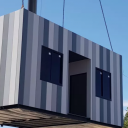
Building the prefab schools of the future
Prefab technology is driving the development of new classrooms in Australia that are a world away from the old “portables” you may remember. Access to schools with high-quality classrooms and safe learning environments is something every...Read more
Designing Australia’s largest school in Melbourne
Melbourne architects are transforming our schools, with a new inner-city learning precinct to teach children from kindergarten to university. When populations explode, meeting the community’s education needs is a challenge. As local schools reach bursting point,...Read more
Child Friendly Places: improving communities for and with children
Resources that can be used by young children, and by adults with low literacy levels, are vital if the child-friendly city movement is to reach those communities that need it most. Here, Sruthi Atmakur-Javdekar of...Read more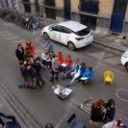
Gangmakers & Koplopers — children exploring, experiencing and imagining urban pathways
Gangmakers & Koplopers (Pace-setters & Front-runners) is a one-year pilot project currently running in various neighbourhoods in Ghent, Belgium. During a series of playful art and design workshops, various groups of children explore, experience and...Read more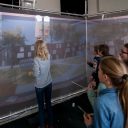
The ‘3D Cave’ – Involving teenagers in planning and design
Many child friendly city initiatives focus on the age group of 6 – 12, thereby disregarding the particular views on the urban environment of teenagers. In fact, they are often regarded as a tough audience...Read more